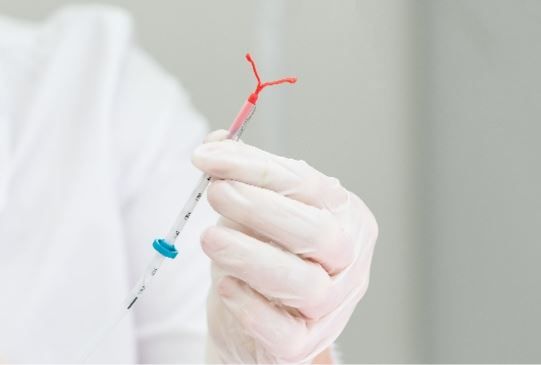- Clinical Technology
- Adult Immunization
- Hepatology
- Pediatric Immunization
- Screening
- Psychiatry
- Allergy
- Women's Health
- Cardiology
- Pediatrics
- Dermatology
- Endocrinology
- Pain Management
- Gastroenterology
- Infectious Disease
- Obesity Medicine
- Rheumatology
- Nephrology
- Neurology
- Pulmonology
Satisfaction with IUD High, Rate of Unprotected Sex Low after Placement Following Medical Abortion
Among women who had an intrauterine device (IUD) placed at no charge shortly after an early medical abortion, rates of continued use and satisfaction with the device were high at 1 year and the risk of subsequent unprotected intercourse was reduced, according to findings published online August 23 in Acta Obstetricia et Gynecologica Scandinavica.
©Mariakray/stock.adobe.com

The investigators from the Karolinska Institutet in Stockholm, Sweden write that 37% to 46% of women having an abortion have had at least one previous procedure. They cite evidence that IUD placement immediately after surgical abortions is associated with higher user rates vs a delayed placement. They add, however, that medical abortion is the most common method in many countries today and that current randomized trial data largely highlight short-term uptake and medical safety aspects vs long-term use and satisfaction.
The authors report here secondary outcomes analyses of an original randomized, controlled, multicenter trial that compared user rates of IUD at 6 months following early medical abortion (up to 63 days' gestation) among women whose placement took place within 48 hours vs within 2 to 4 weeks of abortion.
Their secondary analyses explored the continued use of IUD, reasons for discontinuation, subsequent pregnancies and abortions, and satisfaction with use of the IUD or other contraceptive use up to 1 year following early medical abortion.
Women in the original study were aged ≥18 years, had requested a medical abortion at ≤63 days’ gestation, and elected to have an IUD placed as post-abortion contraception. The participants were then randomly assigned to IUD placement within 48 hours after complete abortion (intervention) or at a scheduled follow-up visit 2–4 weeks after abortion (control).
The final cohort numbered 240 women who had a median age of 30 years and median gestational age of 42 days at the time of the abortion. Slightly less than three-quarters (71.5%) were parous and 53% had previously had an abortion.
FINDINGS
There were 120 women assigned to the intervention group (48h) and 120 assigned to the control arm (2 to 4 weeks). Investigators reported follow-up rates at 12 months at 93.3% and 94.2% respectively.
The rate of IUD use at 12 months including only women with an IUD placed who completed the 12-month questionnaire was 78% in the intervention group and 76.3% in the control group (P = 0.74), according to the published study.
The only predictor of long-term IUD use, the research team found, was attendance at the IUD placement visit (relative risk [RR], 5.7; 95% CI, 2.03–16.0; P = .001).
The most common reason reported for choosing an IUD as a contraception method was high effectiveness (24.6%) followed by low dose/absence of hormones (21.5%), and comfort and ease of use (21.1%).
Reasons for discontinuation of IUD use after 12 months were led by abdominal pain and bleeding problems, followed by mood changes and weight gain and the rates did not differ between the intervention (21.2%) and control (23.7%) groups. IUD expulsion was rare and did not differ significantly between the groups.
High satisfaction, worth a recommendation
Investigators found high satisfaction with IUDs among users (>94%) after 1 year and approximately two-thirds (65.8%) said they would recommend IUD to a friend. Women who had IUD placement at 48 hours were less likely than those who had placement 2 to 4 weeks after an abortion to report using no contraception (9.8% vs 22.1%; P = .02) and also less likely to report unprotected intercourse (15.2% vs 28.3%; P = 0.02)
The rate of subsequent pregnancies did not differ significantly between the intervention and control groups (12.5% and 7.1%; P=.19, respectively) nor was there any significant difference observed in the rate of abortions between the groups (4.5% and 2.7%; P=.5, respectively).
Despite the prolonged efficacy of IUDs, the authors write in the discussion, “a complicating aspect for some women may be the relatively high cost at initiation. The fact that IUDs were provided for free and placed at the abortion clinic (both of which are deviations from clinical routine) may have led to higher IUD placement rates than expected in the control group.”
An outcome that particularly impressed the investigators was that attendance at the initial IUD placement visit was the sole predictor of IUD use at 12 months after the abortion. They stress the clear need for routines that facilitate access to this appointment, citing evidence that shows "if women are referred to a clinic outside the abortion care center, up to half do not attend and risk being left without contraception.”
